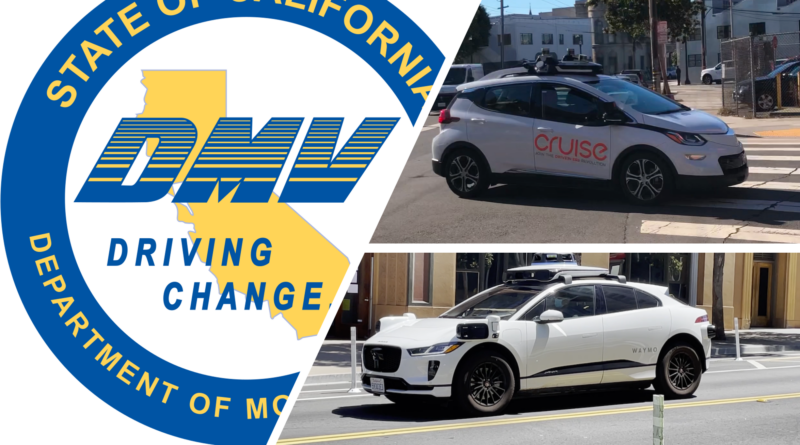Waymo & Cruise Approved For Commercial Robotaxi License
The California Department of Motor Vehicles (DMV) today granted a permit to both Waymo and GM Cruise to operate autonomous cab fleets commercially on public roads. However, there are small differences in where, when and how the vehicles are allowed to operate:
WaymoGM CruiseRegionin parts of San Francisco and San Mateo Countyin parts of San Francisco Speedmaximum 65 mph (104 km/h)maximum 30 mph (48 km/h)Timefrom 0am to 12am (24 hours)from 10pm to 6amWeatherin good weather including rain & light fogin good weather including light rain & light fogVehicleslight-duty vehicles under 4.536 kg (10,001 pound)light-duty vehicles under 4.536 kg (10,001 pound)Test license with safety driversince 2014since 2015driverless test licensesince October 2018since October 2020
The two companies thus join Nuro, which was granted such a commercial test permit last year. Nuro is a company developing autonomous delivery robots that drive on public roads. The list of all current license holders can be found here.
This means that companies are now allowed to charge a fee for their robotaxi service. Waymo already has such a permit for its fleet in Phoenix, Arizona, where the company has been operating it since 2018.
FUTURE ANGST
Welche aktuellen Ängste prägen uns? Mit welchen Ängsten waren die Menschen in der Vergangenheit konfrontiert, als es die heutigen Technologien noch nicht gab? Warum mischen wir heute im Wettbewerb der Kulturen um neue Technologien nicht ganz vorne mit? Welche Maßnahmen müssen wir ergreifen, um neue Technologien nicht als etwas Beängstigendes und Feindseliges zu betrachten, sondern als ein Mittel zur Lösung der großen Probleme der Menschheit?
Ab sofort erhältlich im Buchhandel, beim Verlag und bei Amazon.
DMV requirements for such a permit include:
Identifying the operational design domain of the vehicles, as well as describing any commonly occurring restricted conditions within which the vehicles would not be able to operate.Verifying the technology is capable of detecting and responding to roadway situations in compliance with the California Vehicle Code, and a description of how the vehicle meets the definition of an SAE Level 3, 4 or 5 autonomous technology.Verifying the vehicles meet federal Motor Vehicle Safety Standards or have an exemption from the National Highway Traffic Safety Administration.Certifying the manufacturer has conducted test and validation methods and is satisfied that the autonomous vehicles are safe for deployment on California public roads.Developing a Law Enforcement Interaction Plan that provides information to law enforcement and other first responders on how to interact with the autonomous vehicles.Providing evidence of insurance or a bond equal to $5 million.
This article was also published in German.

